

- CloverLeaf.eu
- Education in the Czech Republic
- Higher Education
- State Higher Education Institutions of the Czech Republic
State Higher Education Institutions of the Czech Republic
We offer to you a list and a brief description of all state universities of the Czech Republic. After successfully finishing our intensive language courses and entrance examination preparation courses, you can easily enter any of them.
Studying in the Czech language in state universities is free both for Czech citizens and for foreigners. Studying in English is always paid.
- The University of Economics in Prague
 The University of Economics, Prague (VSE) is the leading university in the field of management and economics in the Czech Republic. The University of Economics, Prague has six faculties – five in Prague and one in Jindrichuv Hradec in South Bohemia. These include: the Faculty of Finance and Accounting, the Faculty of International Relations, the Faculty of Business Administration, the Faculty of Statistics and Informatics and the Faculty of Economics and Public Administration. The faculty based in Jindrichuv Hradec is specialized in management. VSE is composed of about 15 500 students who are served by more than 650 academic staff as well as about 500 non-academic staff. Sixty-one percent of professors have doctoral degrees in their field.
The University of Economics, Prague (VSE) is the leading university in the field of management and economics in the Czech Republic. The University of Economics, Prague has six faculties – five in Prague and one in Jindrichuv Hradec in South Bohemia. These include: the Faculty of Finance and Accounting, the Faculty of International Relations, the Faculty of Business Administration, the Faculty of Statistics and Informatics and the Faculty of Economics and Public Administration. The faculty based in Jindrichuv Hradec is specialized in management. VSE is composed of about 15 500 students who are served by more than 650 academic staff as well as about 500 non-academic staff. Sixty-one percent of professors have doctoral degrees in their field.Web: http://www.vse.cz/
- Czech Technical University in Prague
 A leading technical research university with a long tradition
A leading technical research university with a long traditionThe Czech Technical University in Prague is the oldest non-military technical university in Europe. Founded in 1707 by Austrian Emperor Joseph I, the University celebrates its 300th anniversary this year. The University?s long tradition of cutting edge science and engineering together with high-quality technical education ensues from the work of many great personalities, including the famous physicist Christian Doppler, notable chemists such as Vladimir Prelog (Nobel prize in 1975) and renowned engineers such as F. J. Gerstner (the first railroad on the European continent) and J. Bozek (the first steam-ship).
Currently, more than 24 000 students are enrolled at seven faculties and three research institutes, covering a total of 14 bachelor programs, 23 master programs and 15 PhD programs. Many of these programs are taught in English, including joint-degree programs with foreign universities. International students form a significant and dramatically growing part of the academic community. The international student induction program was awarded as the best student club in Europe in 2003.
The University is located in the picturesque city of Prague. It expands rapidly, and currently runs additional four campuses outside Prague, in the vicinity of large technological and industrial centers.
The University works closely with industry and commerce, with industrial partners and also with new high-tech companies. The University has built up strong bonds with its industrial partners including important world-scale players, such as Toyota, Skanska, Bosch, Siemens, Honeywell, GE, Rockwell, ABB, McKinsey, DaimlerChrysler, and Skoda-Volkswagen.
Our alumni work as engineers and/or managers in these companies. Others venture into starting up their own company, sometimes resulting in a multinational, such as Netbeans or Telematix. University-industry cooperation is underlined by forming the dedicated research facilities as R&D Center CTU, Ericsson and Vodafone in mobile communication world.
Many graduates become successful researchers and professors at foreign universities and in unique partner laboratories, including CERN, the Brookhaven National Laboratory, where Czech Technical University professors and students conduct some of their experiments, the Lawrence Livermore National Laboratory, and many others.
Web: http://www.cvut.cz/en?set_language=en
- University in Pardubice
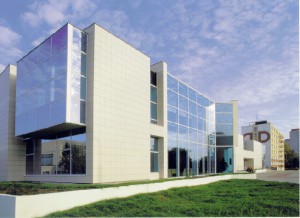 The University of Pardubice has been extending an almost sixty year long tradition of higher education in the City of Pardubice.
The University of Pardubice has been extending an almost sixty year long tradition of higher education in the City of Pardubice.The Chemical College, later known for 40 years as the Institute of Chemical Technology, was founded in Pardubice in 1950 to answer the needs of the East-Bohemian region, which had a highly developed chemical industry, yet lacked professionally trained specialists in this field.
After 1990, the character of the Institute changed, new faculties were founded offering a wide range of study programmes, not only chemistry-related. Since 1994, the new name – the University of Pardubice – has been used.
The University of Pardubice is one of 26 public higher education institutions in the Czech Republic, and the only higher university-type educational institution in the Pardubice Region.
It has 7 faculties and 1 institute with over 9 thousand students in 60 undergraduate or postgraduate study programmes with more than 130 study specializations.
Its educational, scientific, research and development activities are realized with accordance to the Higher Education Act No. 111/1998, and towards the European Higher Education and Research Area (EHEA and ERA).
Web: http://www.upce.cz/english
- Tomas Bata University in Zlin (TBU)
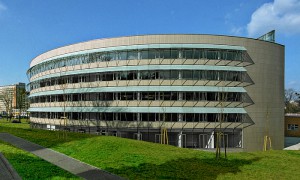 Tomas Bata University in Zlin (TBU) is a progressive educational institution based in the Czech Republic. Through its 6 outstanding faculties, this school offers a wide range of degree courses. At 13,000 students, Tomas Bata University in Zlin aims to become one of the most respected educational and research institutions in the world.
Tomas Bata University in Zlin (TBU) is a progressive educational institution based in the Czech Republic. Through its 6 outstanding faculties, this school offers a wide range of degree courses. At 13,000 students, Tomas Bata University in Zlin aims to become one of the most respected educational and research institutions in the world.
The Tomas Bata University in Zlin was named after the originator of the shoe industry in Zlin and the world-famous entrepreneur Tomáš Baťa. The institute places a heavy focus on research and development, and has attained the world’s highest standards in numerous areas. TBU is a member of the European University Association, and has also signed the Magna Charta Universitatum of Bologna to support scientific development and freedom, and to remove boundaries in acquiring and sharing knowledge.Students enrolled at the Tomas Bata University in Zlin may study within the following disciplines:
- technology
- economics
- humanities
- arts
- health care
As it takes a prominent place within the international education sector, the Tomas Bata University in Zlin increasingly uses English as the language of instruction, although Czech is also used. Graduates of the school are issued a Diploma Supplement, which is recognized throughout Europe and enhances their position in the European labour market. TBU uses a unified credit transfer scheme which is compatible with other European universities.
The European Commission has awarded the Tomas Bata University in Zlin the prestigious Diploma Supplement Label, raising the school’s reputation among higher education institutions in Europe. This top education institution provides students a unique opportunity to pursue a well-known diploma in their subject of interest in the center of EuropeWeb: http://web.utb.cz
- South – Czech university in Czech Budeyovice
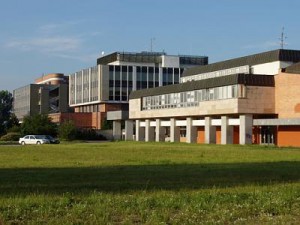 South –Czech university is a state university with a focus on scientific researches. South-Czech University closely cooperates with Czech Academy of Science and gives its students the opportunity to fulfill their plans and ideas in future.
South –Czech university is a state university with a focus on scientific researches. South-Czech University closely cooperates with Czech Academy of Science and gives its students the opportunity to fulfill their plans and ideas in future.South-Czech University is a young and dynamically developing university, which marked it 15th anniversary in 2006. The university was founded in 1991 from pedagogical and agricultural faculties which belonged at that time to Czech Agrarian University. At the same time 3 more faculties appeared: biological, theological and medical social. Over time the university started to incorporate a research institute, physical biology institute and historical institute (Philosophic faculty now).
In regards to long-term tendency the university in Ceske Budejovice specializes mainly in the area of natural, social sciences and humanities. The strong points of the university include science, research and its focus on regional problems.
The university offers Bachelor, Master and Doctorate programs of study, which offer education in 246 branches in the form of full-time and distance tuition. 24 branches have lectures in English, 3 in German. More than 13 000 students study at the University. The number of applicants is four times bigger than the possibilities of the university.
Cooperation with entrepreneurial sphere is one of the strong points of the university. Alongside with examinations and work at the projects of social and private types, the university manages 2 innovative infrastructures aimed to support entrepreneurship. It owns webpage www.b4i.cz, which is a part of the project Bridge4Innovation. Its aim is to create a multifunctional base for support and popularization of research, development and innovations.
International cooperation with foreign enterprises is very large-scale – from neighboring Germany and Austria through European states to America, Asia, Africa and Australia.
The university takes part in different international research projects.
Webpage: http://www.jcu.cz/
- Czech University of Life Sciences
 In 2006 the Czech University of Life Sciences marked its 100 years anniversary.The history proper of the University started with the establishment of the Agricultural Department at the Czech Technical University (CVST) in 1906. From the very start active research activities were an indispensable part of the university. The development of the Agricultural Department was stalled by World War I, after which the education had again a period of growth.
In 2006 the Czech University of Life Sciences marked its 100 years anniversary.The history proper of the University started with the establishment of the Agricultural Department at the Czech Technical University (CVST) in 1906. From the very start active research activities were an indispensable part of the university. The development of the Agricultural Department was stalled by World War I, after which the education had again a period of growth.In 1920 the Agricultural Department was reformed into an Agriculture and Forestry (Engineering) School of Higher Learning (VSZLI).
The years of the Nazi occupation were a trying ordeal for the development of all Czech higher education institutions. Outstanding experts were made to leave Agriculture and Forestry School. A lot of students and teachers were persecuted.
The independent University of Agriculture in Prague, formerly part of the Czech Technical University in Prague, was established by the Government Decree of 8 July 1952. On the one hand the abundant state support of agricultural education was positive in the form the new opportunities for learning and research, on the other hand the political bias which dominated the educational environment and the necessity to meet the needs of collectivisation should not be overlooked, particularly when its effect for the national economy proved to be at least controversial in historical retrospect.
In the following years the University of agriculture in Prague expanded. The university got its present day name on the 1st of January 1995.
Nowadays the Czech University of Life Sciences is the main centre for higher education in the area of agriculture and forestry in the Czech Republic. Lately the university has expanded the opportunities of education in the area of ecology, environmental issues and started to pay more attention to the preparation of experts in the fields of agricultural economics, national economics and international organisations.
The Czech University of Life Sciences is one of the leading state universities which offers Czech and foreign students to gain a high quality higher education. At present more than 7000 students study at the university.
Website: http://www.czu.cz
- The Institute of Chemical Technology
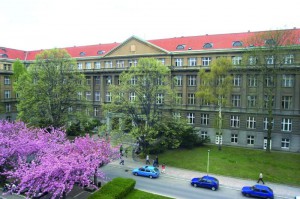 The Institute of Chemical Technology is the largest higher education institution in the Czech republic in the area of chemical industry. Since the time of its foundation the university has been one of the main central European research centres in the field of chemistry.
The Institute of Chemical Technology is the largest higher education institution in the Czech republic in the area of chemical industry. Since the time of its foundation the university has been one of the main central European research centres in the field of chemistry.The foundation of the Institute of Chemical Technology is connected with almost 200 year tradition of studying chemistry in the Czech Republic. In 1952 the institute was officially opened on the basis of the School of Chemical and Technical Engineering. The number of faculties was growing very rapidly, the name and specializations were changed. The professors of the Institute were winners of Nobel Prize for chemistry and a lot of renowned names in the branch.
The institute has a top level technological base including educational buildings, halls of residence, research centres and so on. The institute has more than 40 direct partner universities all over the world. In scientific and educational projects the institute supports leading companies of the branch, including oil-processing Unipetrol and pharmaceutical company Zentiva.
Webpage: http://www.vscht.cz/homepage
- Mendel University in Brno
 Mendel University in Brno is the oldest agrarian and agricultural higher education institution of the Czech Republic. It was established in 1919 as the University of Agriculture in Brno and it operated under this name until 1994. The establishment of the university crowned the many-year educational investments in agriculture of Moravian region, which has always been one of the most advanced agricultural areas in eastern Europe. During its existence the university has gone through a number of changes in the organizational structure and has prepared a great number of experts and professionals – almost 25 thousand engineers of agriculture and more than 6 thousand forestry engineers.
Mendel University in Brno is the oldest agrarian and agricultural higher education institution of the Czech Republic. It was established in 1919 as the University of Agriculture in Brno and it operated under this name until 1994. The establishment of the university crowned the many-year educational investments in agriculture of Moravian region, which has always been one of the most advanced agricultural areas in eastern Europe. During its existence the university has gone through a number of changes in the organizational structure and has prepared a great number of experts and professionals – almost 25 thousand engineers of agriculture and more than 6 thousand forestry engineers.The curriculum was based on 2 directions: agriculture and forestry. Gradually the number of programs and academic majors was expanding. At present the university offers about 65 programs for bachelor, master, 5 year master and Doctorate programs of study. Within the framework of educational program students can choose individual curriculum, consisting of special subjects which were adapted in accordance with the EU requirements.
At present, the student population of the university amounts to 10,654 out of which 585 are international students.
The University offers such attractive study fields as Agroecology, Biotechnology, Plant Health Care, Road Transport, Horse Breeding and Agro-Tourism, Waste Technology, Food Technology, Regional Development, Design and Production of Furniture, Biotechnical Landscaping, Forestry, Economic Informatics, Tourism, Public Administration, Finance, Garden and Landscape Architecture, Viticulture and Winemaking, Horticulture, Technical Expertise and Insurance and many others.
Mendel University in Brno systematically responds to changes in national and international environment and adapts the content, forms and methods of education to these keep pace with these changes. Those interested in studying at MENDEL University can choose from 35 accredited fields of study in Bachelor’s program and 35 fields of study in Master’s program.
Each student of Mendel University can spend a part of his or her study abroad at one of more than 100 partner universities, if they meet certain requirements. Besides improving the level of a foreign language, the students have the opportunity to gain new and valuable knowledge, experience, practice and meet a lot of new friends. It is possible to have internships at universities and colleges in France, Austrian, Germany, Poland, Great Britain, USA and many other countries. The university is a member of large European organizations and collaborating networks of similarly oriented universities and colleges. The inclusion of the university into SOCRATES, LEONARDO DA VINCI, CEEPUS, AKTION and other international programmes and projects brings another opportunity to develop international cooperation.
Webpage: http://www.mendelu.cz
- Jan Evangelista Purkyne University
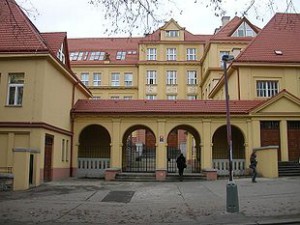 Jan Evangelista Purkyne University in Usti nad Labem is a modern educational and scientific institution offering 190 branches of study in different areas.
Jan Evangelista Purkyne University in Usti nad Labem is a modern educational and scientific institution offering 190 branches of study in different areas.The university was solemnly opened on the 28th of September 1991. It was named after renowned Czech philologist, anatomist and biologist Jan Evangelista Purkyně (1787-1869).
The history of the university dates back to 1954 when a pedagogical college was opened in Ústí nad Labem, which subsequently became a pedagogical institute. In 1964 a pedagogical faculty was opened. On its basis in 1991 Jan Evangelista Purkyně University was founded with three faculties: pedagogical, socio-economic and environmental. In November 2001 the fourth faculty of art and design was opened on the basis of existing at that time Institute of Fine Arts. And in 2005 the faculty of natural science was launched on the basis of the Institute of Natural Science.
The university actively develops scientific activities. Every year more and more academic staff and students take part in scientific work.
The university develops cooperation with foreign universities. The Jan Evangelista Purkyně University during the 1st ten years since its foundation signed agreements with universities of Germany, Hungary, Norway, Poland, Sweden, the U.S., the UK and Slovakia. In the following years bilateral agreements were signed with partner universities in Israel, Austria, Russia, Turkey, Vietnam and Ukraine.
Webpage: http://www.ujep.cz/
- Palacký University
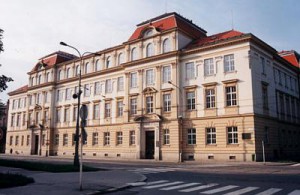 Palacký University is the second oldest higher education institution in the Czech Republic. The university is famous for its traditions, developed 5 centuries ago. Nowadays it is a modern university with a wide selection of study fields and extensive scientific activities.
Palacký University is the second oldest higher education institution in the Czech Republic. The university is famous for its traditions, developed 5 centuries ago. Nowadays it is a modern university with a wide selection of study fields and extensive scientific activities.The history of the university dates back to the 16th century when the so-called Jesuits University was founded in Morava, which incorporated a gymnasium and philosophic and theological faculties.
In 1778-1782 the university was temporarily located in the city of Brno. After returning to Olomouc the educational institution status was demoted to lyceum. At that time the educational institution consisted of four faculties: theological, legal, medical and philosophic.
Its present day name the university got in 1946. The university was named after Frantisek Palacky who was a famous Czech writer and politician, who later received the title „Father of Czech people“. The first rector of the renewed university was the dean of philosophic faculty of the Masaryk University, philosopher and sociologist Joseph Ludvig Fisher.
In 1953-1958 the University consisted of only one faculty of medicine. The reason of the absence of other faculties was a new pedagogical university with a faculty of natural and social sciences which was founded in Olomouc. In 1958 Pedagogical University was closed and thus philosophic and natural science faculties were once again incorporated in Palacky University. Pedagogical faculty established in 1964 became the fourth faculty of this educational institution.
The Palacky University alongside with other Czech universities could not avoid the repression of 1969-1989. Different forms of persecution affected every fourth employee of the University. November revolution in 1989 became the start of a new stage of the university history which happens to be the most important and fruitful. The university turned to Europe and to the whole world, started to cooperate with educational institutions of other countries, develop scientific and research activities.
Nowadays the number of students at University is about 15000, the teaching staff comprises 1000 teachers.
Webpage: http://www.upol.cz/
- Masaryk University
 Masaryk University was established in 1919 soon after the creation of Czechoslovak state. The decision was preceded by the many years efforts on the part of Czech society to establish a second centre of national education and culture after Charles University. Behind this campaign stood Tomas Garrigue Masaryk. In the 1880s he was already stressing the need for the widest possible variety in scientific and scholarly life, pointing out that the single Czech university – Charles University in Prague – for proper development needed a counterpart in the county. For many years the task of establishing a second Czech university was one of Masaryk’s main political priorities. He was not alone in this: the university question was taken up not only by professors and students at Charles University, but by the public at large. Soon the topic was discussed in Vienna and some time later in Moravian parliament.
Masaryk University was established in 1919 soon after the creation of Czechoslovak state. The decision was preceded by the many years efforts on the part of Czech society to establish a second centre of national education and culture after Charles University. Behind this campaign stood Tomas Garrigue Masaryk. In the 1880s he was already stressing the need for the widest possible variety in scientific and scholarly life, pointing out that the single Czech university – Charles University in Prague – for proper development needed a counterpart in the county. For many years the task of establishing a second Czech university was one of Masaryk’s main political priorities. He was not alone in this: the university question was taken up not only by professors and students at Charles University, but by the public at large. Soon the topic was discussed in Vienna and some time later in Moravian parliament.By a law of 28th January 1919 a Czech university with four faculties – law, medicine, science and arts – was founded in Brno. From the beginning it had the name of Tomas Garrigue Masaryk. The mission of the new university, in the words of the founding document of 1919, was to „live, grow strong and flourish in noble emulation of its older sister in Prague“.
From the very beginning, Masaryk University was successful in fulfilling its mission. Due to its academic staff and good material support the new university occupied an outstanding position in scientific, cultural and social life of the country.
Today
Today the Masaryk University is the second largest state university of the Czech Republic. It consists of 9 faculties, comprises more than 200 departments, institutes, clinics. University is famous as a centre of culture and education, having long democratic traditions, not only in Czech Republic but also wide abroad.
Masaryk University has a wide range of traditional and modern study fields and it is the most dynamically developing higher education institution in Europe. The university became one of the first higher education institution s to introduce the three-level educational system, based on the system of credits ECTS (European Credit Transfer and Accumulation System).
The university takes part in a number of scientific and research projects of the European Union, cooperates with the best universities all over the world, and due to this collaboration the students of Masaryk university have an opportunity to have a practical training abroad according to their academic majors.
Today the university has 33389 students. Since 1922 95377 students graduated from Masaryk University.
Webpage: http://www.muni.cz/
- Hradec Kralove University
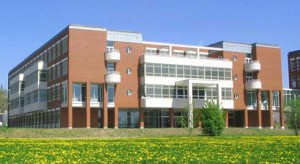 Hradec Kralove University is a rather new university located in one of the most beautiful Czech town. It offers quality education in many areas. The university has managed to acquire a flawless reputation in the education market of the Czech Republic.
Hradec Kralove University is a rather new university located in one of the most beautiful Czech town. It offers quality education in many areas. The university has managed to acquire a flawless reputation in the education market of the Czech Republic.Hradec Kralove University was opened in 2000. It replaced Pedagogical University, founded in 1959, originally as Pedagogical University of Hradec Kralove, which prepared primary school teachers. In 1964 an independent pedagogical faculty was founded here by means of amalgamation of pedagogical institutes of Hradec Kralove and Pardubice city. This educational institution prepared teachers for all school types including secondary school.
Further changes in 1898 were a watershed in the activities of the pedagogical faculty. Some employees who worked here in 60s came back, the faculty started to cooperate with Czech universities and foreign higher education institutions in Poland, Switzerland, Austria, Germany, Great Britain, and later – with universities in the Netherlands, France, Spain, Greece, Portugal, the U.S. and Ireland. The university started to hold scientific conferences with the participation of international organization and take part in academic staff exchange within the framework of SOCRATES.
Due to all these changes the pedagogical faculty was awarded a university status, and for some time the Pedagogical University consisted only of one faculty (pedagogical). On the 15th of February 1993 a faculty of informatics and management was opened and on the 1st of September 2005 faculty of humanities was founded.
Webpage: http://www.uhk.cz
- The Institute of Technology and Business in České Budějovice
 The Institute of Technology and Business in České Budějovice belongs to the youngest universities of the Czech Republic. It was founded in 2006 and is a higher education institution of non-university type. It is one of 2 Czech professionally oriented higher education instituitions with technical areas of study. Practical knowledge (professional orientation) is achieved by the combination of studies with practical training in different companies. Professional orientation is in compliance with the law of higher education institutions of non-university type.
The Institute of Technology and Business in České Budějovice belongs to the youngest universities of the Czech Republic. It was founded in 2006 and is a higher education institution of non-university type. It is one of 2 Czech professionally oriented higher education instituitions with technical areas of study. Practical knowledge (professional orientation) is achieved by the combination of studies with practical training in different companies. Professional orientation is in compliance with the law of higher education institutions of non-university type.The Institute offers bachelor programs of study which last 3-4 years and include research, development and creative activities. Implementation of vocational bachelor’s degree programs is supported by the cooperation with business entities of the region. Other priorities of the Institute of Technology and Business include applied research, introduction of innovative technologies and the transfer of knowledge in the areas that are crucial for the needs of the region.
The campus of the the Institute of Technology and Business has a wide selection of sports facilities.
Webpage: http://www.vstecb.cz/
- The Technical University of Liberec
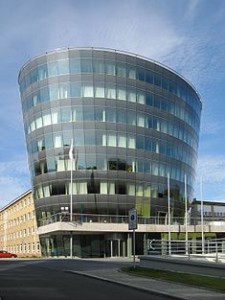 The Technical University of Liberec was founded on the basis of Machine-building University, which existed in Leberec from 1953. The Machine building University was aimed to develop the branches typicalfor industrial Liberec area: engineering technology, machine construction and equipment (mainly textile machinery and machinery for the manufacture of glass, etc.) In 1960 the university was divided into 2 faculties: the faculty of mechanical engineering and faculty of textile. The name was changed and now it was the University of Mechanical Engineering and Textile. In the following 1990-1995 54 more faculties were founded.
The Technical University of Liberec was founded on the basis of Machine-building University, which existed in Leberec from 1953. The Machine building University was aimed to develop the branches typicalfor industrial Liberec area: engineering technology, machine construction and equipment (mainly textile machinery and machinery for the manufacture of glass, etc.) In 1960 the university was divided into 2 faculties: the faculty of mechanical engineering and faculty of textile. The name was changed and now it was the University of Mechanical Engineering and Textile. In the following 1990-1995 54 more faculties were founded.Since the 1st of January 1995 the university started to be called The Technical University of Liberec. This change was called forth by the changes and increased number of bachelor, master and doctorate programs of study.
The appearance of new faculties was necessary because of the growing needs of the region which needed specialists in different area such as primary school teachers, economists and managerial personnel. The appearance of architectural faculty was based on abundant traditions of the city of Liberec, nowadays the university prepares specialists in the area of architectural designing. The Faculty of Mechatronics, Informatics and Interdisciplinary Studies reflects the combination of electronics, cybernetics, engineering sciences, chemistry, and biology.
At present 5000 students study at the University in the form of full time tuition.
Webpage: http://www.tul.cz/
- Technical University in Brno
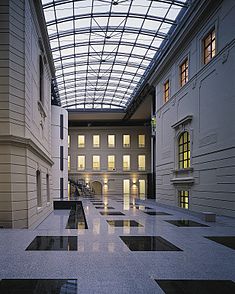 Technical University in Brno is the oldest university of this city. Its history started in 1849 when German-Czech technical school was founded.
Technical University in Brno is the oldest university of this city. Its history started in 1849 when German-Czech technical school was founded.The grand opening of the University took place in in November 1899. The academic staff consisted of 5 people and started teaching the first group of students with a major in building engineering. 1900 marked the opening of a range of new fields of study – land reclamation engineers, water engineering, electrical engineering and chemical engineering. After the World War I architectural specialisation started to develop too.
The watershed period was the period of the World War II, when the University was closed. In 1945 the university was rebuilt and continued its activities. In 1956 it was renamed Brno Technical University. 1989 was a milestone year for the University when considerable faculties transformation and foundation of new ones took place.In 1992 the faculty of entrepreneurship and the faculty of chemistry were launched , and in 1993 art faculty and the faculty of informational technologies were founded. At present the college offers a wide range of technical specialisations and a range of disciplines in the area of art.
In 2006 Brno Technical University was rated among the best 500 universities of the whole world. This rating is published every autumn in The Times Higher Education Supplement of English newspaper The Times.
Webpage: www.vutbr.cz
- VŠB – Technical University of Ostrava
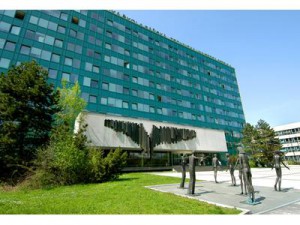 Technical University of Ostrava is one of the oldest universities in the Czech Republic. It is the successor of mining and geological technical school, founded by the Emperor decree in 1849 in Pribor. In 1865 the technical school was renamed Mining Institute. The Institute was awarded many titles which attested to the process of the recognition of this institute as a fully-fledged higher education institution. The activities of Mining Institute fully corresponded to its name and In 1918-1938 it was the only institute in the Czech Republic which educated mining experts. In 1945 the institute was moved to Ostrava, and since then it has played a significant role in the development of Moravian-Silesian region.
Technical University of Ostrava is one of the oldest universities in the Czech Republic. It is the successor of mining and geological technical school, founded by the Emperor decree in 1849 in Pribor. In 1865 the technical school was renamed Mining Institute. The Institute was awarded many titles which attested to the process of the recognition of this institute as a fully-fledged higher education institution. The activities of Mining Institute fully corresponded to its name and In 1918-1938 it was the only institute in the Czech Republic which educated mining experts. In 1945 the institute was moved to Ostrava, and since then it has played a significant role in the development of Moravian-Silesian region.The mining institute is historically connected with the development of mining operations and natural resources processing. Technical mastery of Czech people developed first of all due to metal processing. The institute relied on the industry and tried to consistently keep pace with social and economic changes.
In 1989 Technical university in Ostrava due to structural changes turned into a modern higher education institution, with a fully fledged possibility to study at Economics faculty. In the following years 3 new faculties appeared – faculty of electrotechnology and informatics, building faculty, faculty of safe engineering which expanded the opportunities of students in technical branches.
At the end of the 20th century the university came through a stage of dynamic development, which contributed to the area of education, science, research carried out in cooperation with the industrial and business sphere. Nowadays, with over 19,000 students studying bachelor, master and doctoral accredited programs at seven faculties, the school is the fourth largest university in the Czech Republic.
Technical University today is a higher education institution of university type, which offers economic and technical education. University researchers, teachers and students cooperate with scientific organisations, Czech and foreign universities.
The entry of the Czech Republic into the European Union is closely connected with the adaptation of study programs within the European area of higher education and with the effort to participate in European research programs. The changes in the structure model of education at the University are carried out in accordance with the Bologna Declaration. In addition the European Credit Transfer System (ECTS) has been introduced which enabled the university to take part in academic staff and student exchange programs.The University is one of the first universities in the Republic to award the so-called Diploma Supplements.
VŠB – Technical University of Ostrava is a modern institution of higher learning offering university education in technical and economic branches of study based on creative research in a wide range of study fields. At the same time traditional branches of study are preserved and thus the monopoly position of the Technical University of Ostrava in these areas is maintained.
Webpage: http://www.vsb.cz
- Silesian University in Opava
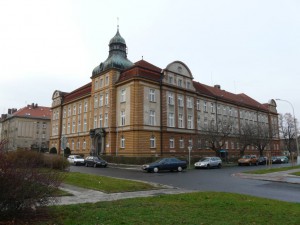 Among Czech universities Silesian University in Opava is the only one which was founded after 1989 from scratch without a base in the form of existing faculty or a research institute. The idea of the foundation of the University appeared in 1945 but the political climate was unfavorable. The start of the university took place after the 17th November 1989. On the 17th September a philosophic faculty was founded in Opava and entrepreneurial faculty in Karvina. On the 9th July 1991 both faculties were combined and thus Opava Silesian University appeared.
Among Czech universities Silesian University in Opava is the only one which was founded after 1989 from scratch without a base in the form of existing faculty or a research institute. The idea of the foundation of the University appeared in 1945 but the political climate was unfavorable. The start of the university took place after the 17th November 1989. On the 17th September a philosophic faculty was founded in Opava and entrepreneurial faculty in Karvina. On the 9th July 1991 both faculties were combined and thus Opava Silesian University appeared.Nowadays the situation is opposite since the University complex has expanded, the educational process relies on serious material base; entrants’ interest in the university has increased too. At the beginning of the millennium the university went through a difficult evolution.
The university is a member of the European Association of universities. Nowadays it is a dynamically developing university cooperating both with Czech and foreign higher education institutions. Besides two faculties (philosophic – now it is called philosophic and natural science faculty and entrepreneurship faculty) the university incorporates Mathematical Institute.
As far as research activities are concerned, in both Opava and Karvina scientific research is developing very quickly. Both publishing activities of the university and international scientific conferences held here on a regular basis attest to progress in the field of scientific work.
Webpage: http://www.slu.cz/slu/cz/
- The College of Polytechnics Jihlava
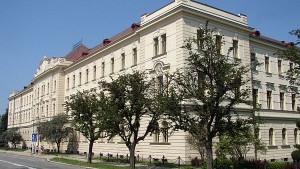 The College of Polytechnics Jihlava was established in 2004 as the first public college of a non-university type in the Czech Republic and is the only public college in Vysocina region. According to the higher education law of the Czech Republic 111/1998 a higher education institutions of a non-university type has the same legal validity as university type institutions. The difference includes three aspects – a higher education institution of a non-university type can’t enroll students for doctorate programs of study, it is not divided into faculties, and its scientific council is called an academic council.
The College of Polytechnics Jihlava was established in 2004 as the first public college of a non-university type in the Czech Republic and is the only public college in Vysocina region. According to the higher education law of the Czech Republic 111/1998 a higher education institutions of a non-university type has the same legal validity as university type institutions. The difference includes three aspects – a higher education institution of a non-university type can’t enroll students for doctorate programs of study, it is not divided into faculties, and its scientific council is called an academic council.The objectives of the college:
The polytechnical college is a higher education institution focused on practical education. Its task is to offer different educational programs, aimed at the regional labor market and development of cooperation with practical sphere. Its creative activities and applied research contribute to cultural and general development of the region.
The college offers different bachelor programs and programs of distance learning. Bachelor programs meet the requirements of regional labor market and correspond to the name of the college.
The word „polytechnics“ was taken from Ancient Greek and in a broader sense it means skills in art and crafts, experience, ability, a range of qualities, mastery. And these are the areas in which this rather young college develops.
The general aim of the study within the accredited study programmes is to provide students with the possibility to gain professionally oriented education with substantially practical results. The significant part of the educational process is one week and semester practical training.
After the receiving of bachelor degree, the graduate is entitled to continue education in Master programs in other universities in the Czech Republic and abroad.
The College of Polytechnics takes part in different research and creative activities, in problem-solving in business and social areas, organises conferences with participants form different countries, publishes its own magazines. Students and academic staff take part in international exchange programs. The College of Polytechnics is the only educational institution in the Czech Republic which has its own travel agency.
More than 3000 students study at the College of Polytechnics.
Webpage: www.vspj.cz
- The University of Ostrava
 The University of Ostrava was founded on the 28th September 1991. Since its foundation it has managed to become an integral part of Czech higher education system and turn into a competitive educational and partly research organisation. Its origins can be traced back to 1953, when a training college for future primary school teachers was opened. This college was replaced by a pedagogical faculty which subsequently was transformed into a fully-fledged humanities university.
The University of Ostrava was founded on the 28th September 1991. Since its foundation it has managed to become an integral part of Czech higher education system and turn into a competitive educational and partly research organisation. Its origins can be traced back to 1953, when a training college for future primary school teachers was opened. This college was replaced by a pedagogical faculty which subsequently was transformed into a fully-fledged humanities university.The University of Ostrava incorporates two independent research institutes. The Institute for Research and Application of Fuzzy Modeling develops new mathematical methods and other areas of soft computing. The second institute European Research Institute for Social Work pursues two main goals which are professional growth of young researchers and development of knowledge and skills of social work managers with practical training across Europe.
The university have popular competitions, which are held in Ostrava. Talented mathematicians from all over the world come to natural science faculty to take part in the Vojtech Jarnik International Mathematics Competition. The same faculty organizes a chess competition. Competition “Day with Translation” organized by philosophic faculty for young and talented translators is a holder of a prestigious award Label 2009.
Webpage: http://www.osu.cz/
- Charles University in Prague
 The oldest university in Europe Charles University was founded on the 7th of April in 1348 by Charles IV – the Roman Emperor and Bohemian king.
The oldest university in Europe Charles University was founded on the 7th of April in 1348 by Charles IV – the Roman Emperor and Bohemian king.In accordance with medieval concepts of academic range the founded university had 4 faculties: theology, law, medicine and art. Soon Prague university mainly due to Master Jan Hus developed cooperation with medieval intellectual movements, which called for church and social reforms.
The Prague University history was closely connected with the destiny of Czech state and Czech people, not only in Husits period but in the following centuries too.
The university with four faculties was created from the faculty of art (the only faculty which survived the Husits wars ) and Jesuit Clement which had been already established in the middle of XVI century as a counterbalance for a non-catholic establishment.
Despite the pressure and persecution from church the faculty was the centre of education and scholarship and its existence was a spur for the development of Czech national identification.
The middle of XVIII was famous for constant introduction of reforms in education. This process reached its peak at the the end of the century, when even non-catholic people were entitled to education. 1848 was the year of revolutions, Prague University was once again in the midst of national, democratic and revolutionary turmoil.
The next period with Minister Bak simultaneously included repression of democratic student movements and demonstration of a whole range of liberal reforms.At the second half of XIX. century the University more responded to political and economic needs of the society. Increased interest in Czech national life, in science, cultural and political activities made Vienna government in 1882 divide the University in two institutions one German and one Czech. They worked with each other even after the establishment of a new independent Czechoslovak state in 1918 and until 1938.
Only after the appearance of Czechoslovakia Charles University received the status which increased its political and cultural significance.
Nazi occupation in 1939 had a negative impact on the development and the existence of the institution. One of the first repressions that was undertaken by Nazi was aimed at Czech science and higher education. On the 17th of 1939 Prague University was closed alongside with other Czech higher education institutions, and most Czech students were sent to concentration camps.Some students were executed and their professors were persecuted. The German part of the Prague University was declared Reich university. It should be also mentioned that at this university some students and professors intended to undermine the democracy of Czechoslovak state.
After the liberation the Czechoslovakia the University rapidly started to develop in all aspects. In spring 1968 a new wave of repressions stroke the university at the period of the so-called normalisation . Only after the revolution the situation changed.
The designation of new representatives from free academic society was legalised in January 1990 and meant the start of democratic transformations in the life of the university.
Some of the cleverest men taught at the University such as a priest, theologian and Czech reformation ideologist Jan Hus(from 1409 the rector of Charles University), the doctor Jan Jesenij, physiologist Jan Jevangelist Purkine, philosophy professor and first Czech president Tomas Garrik Masarik, Nobel prize winner chemist Jaroslav Gejrovsky and others.
Charles University is a member of the European Universities Association together with Oxford, Leiden, Bonn, Sorbonne, Bologna and the University of Geneva.
Teachers from leading world universities read lectures in Charles University. More than 37 000 students from different countries study at the University.
Webpage: www.cuni.cz
- The School of Decorative Arts in Prague
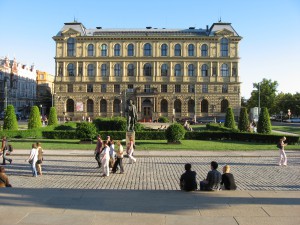 The School of Decorative Arts in Prague was inspired by Gottfried Zemper`s ideas and concepts in 1885. Zemper’s construction process was based on of humanity experience of creativity and was looking for symbiosis of art and technics. As an architecture theorist he strived to combine theoretical and technical components of construction in accordance with an art concept both in scientific technical work and with masters’ work.
The School of Decorative Arts in Prague was inspired by Gottfried Zemper`s ideas and concepts in 1885. Zemper’s construction process was based on of humanity experience of creativity and was looking for symbiosis of art and technics. As an architecture theorist he strived to combine theoretical and technical components of construction in accordance with an art concept both in scientific technical work and with masters’ work.The School of Decorative Arts in Prague which started its work sticking to Zemper’ principles in 1885 and was the only art higher educational institution in the country. The building of the school was finished in 1885 within the framework of Frantisek Schmoranze and Jan Machitka project.
The School nowadays takes part in several international projects, consistently expands its education in the area of free and applied art, publishes books on art and on exhibition activities all over the world.
Webpage: http://www.vsup.cz
- The University of West Bohemia
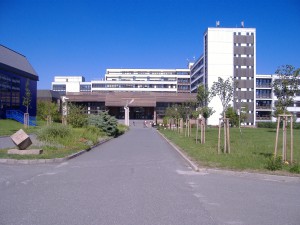 The University of West Bohemia (UWB) is in Plzen, the fourth largest city of the Czech Republic. Plzen is 78 km from Prague and 80 km from the German border.
The University of West Bohemia (UWB) is in Plzen, the fourth largest city of the Czech Republic. Plzen is 78 km from Prague and 80 km from the German border.The University of West Bohemia (UWB) was established in 1991 when the Institute of Technology in Pilsen and the College of Education( Charle’s University subsidiary) were amalgamated.
The Institute of Technology was founded in 1949 as a branch of the Czech Technical University in Prague. In 1953 it became an independent institution and began to grow very dynamically. In 1960 it was divided into two faculties – the Faculty of Mechanical Engineering and the Faculty of Electrical Engineering. Two new faculties – the Faculty of Applied Sciences and the Faculty of Economics – were established in 1990, a few months after the Velvet Revolution.
The College of Education was founded in 1948 as a part of the Faculty of Education of Charles University, Prague. For some time it operated as an independent School of Education, then as an Institute of Education and since 1964 as an independent College of Education training teachers for both primary and secondary schools. The main focus of the college was to prepare primary and secondary school teachers.
In 1993 a sixth faculty – the Faculty of Law – was established in order to meet the increased demand for legal education .
In 2001 the Faculty of Humanities was established, after having existed as the centre for the Humanities at the Faculty of Law from 1997.
Together with the Faculty of Medicine, which is a part of Charles University, Prague, the University of West Bohemia is able to provide higher education in most of the major areas. It prepares students in the following areas: construction, electrical engineering, computer science, applied mathematics, physics, mechanics, economics, pedagogy, philosophy, philology, social and cultural anthropology, archeology, law, and public administration.
The main range of activities of the University:
- Make education accessible and guarantee free research
- Offer specific as well as universal educational programmes pursuing humanitarian goals and thus contributing to the social development of students
- Design and implement study programmes keeping pace with changing requirements of society
- Support the consistent exchange of knowledge, ideas, information, staff and students with the rest of the world
- Maintain permanent professional as well as social relationships with the graduates of the University
- Support scientific, technical and humanitarian orientated innovations which are applicable in everyday life
- Plan and implement a mutually beneficial and creative partnership with the public as well as the private sector both in this country and abroad
- Play the role of a major higher education institution for education, research and development in the region of West Bohemia
- Contribute to the closer integration of the University with regional, national, European and world economies
- Prepare young people for careers in different areas
- Support of business activities
Webpage: http://www.zcu.cz/
- The University of Veterinary and Pharmaceutical Sciences Brno
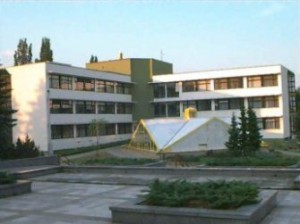 The University of Veterinary and Pharmaceutical Sciences Brno was founded on December 12, 1918. It was the first university to be formed after the creation of the Republic of Czechoslovakia. The main concepts of the educational institution were adopted from Vienna Veterinary University. The university’s founder and first rector was Prof. MUDr. Eduard Babák.
The University of Veterinary and Pharmaceutical Sciences Brno was founded on December 12, 1918. It was the first university to be formed after the creation of the Republic of Czechoslovakia. The main concepts of the educational institution were adopted from Vienna Veterinary University. The university’s founder and first rector was Prof. MUDr. Eduard Babák.The university received 13 hectares in the northeast of Brno, where in 1919 18 research institutes and clinics started their educational and scientific activities.
Since 1994, the university has been officially called the Brno University of Veterinary and Pharmaceutical Sciences. Before it was called Higher Veterinary and Pharmaceutical School.
The University of Veterinary and Pharmaceutical Sciences Brno is one of the best pharmaceutical universities. The university students have practical training and take part in scientific work during the studies.
The University of Veterinary and Pharmaceutical Sciences Brno
- Is a public university with more than 90 years of tradition
- offers interesting and promising study programmes in the areas of Veterinary Medicine, Veterinary Hygiene and Ecology, and Pharmacy, taught in Czech and English
- is concentrated in a university campus near the centre of the city
- offers the best of traditions combined with modern teaching methods and excellent equipment
Webpage: http://www.vfu.cz/
- Academy of Performing Arts in Prague
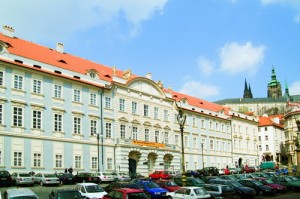 Academy of Performing Arts in Prague is a higher educational institution situated in Prague and focused on the preparation of specialists in the area of performing art. As an independent institution it was founded in 1946 on the basis of Prague Conservatory (Czech Mistrovská škola pražské konzervatoře). Besides Music Faculty the Academy incorporates a Theatre Faculty and Film and TV School.
Academy of Performing Arts in Prague is a higher educational institution situated in Prague and focused on the preparation of specialists in the area of performing art. As an independent institution it was founded in 1946 on the basis of Prague Conservatory (Czech Mistrovská škola pražské konzervatoře). Besides Music Faculty the Academy incorporates a Theatre Faculty and Film and TV School.Music faculty (HAMU)
For the Czech world of music Musical Faculty is the cradle of new talents. It is a place where young prodigies turn into independent creative personalities under the supervision of older generations. It was founded within the framework of the Academy of Performing Arts by the presidential decree of Eduard Benes. The idea of creation of a higher musical school was worked out discreetly during the period of German occupation by a group of young professors from Prague Conservatory. The first teachers were renowned composers and performers of those times and the first rector was a musician and a cellist, the last bearer of the famous Czech quarte traditions Ladisalv Zelenka.
Music faculty is chosen as a place of study by future composers, conductors and opera directors, also soloists and actors in the following fields of study: singing, piano, organ, string quartet instruments (violin, viola, cello), double bass, harp and instruments of woodwind quintet (flute, oboe, clarinet, bassoon, French horn). In 1950the faculty introduced new programs of study: pipe and trombone, dulcimer and guitar. The Theatre Faculty passed here the basics of dance pedagogy, choreography, art of dancing and pantomime.
The faculty cooperates with other European musical universities and its students on a regualar basis win prizes and awards in foreign competitions.
The main objective of the faculty is individual development of each talent.
Since 1993 the Musical Faculty has been situated in reconstructed Lichtestein and Gartig palaces, both these buildings are situated in the centre of Prague – Mala Strana. Here students have all the necessary facilities at their disposal: lecture halls, ballet halls, recording studios, archives and rooms for musical instruments.
Film and TV School of the Academy of Performing Arts in Prague
Film and TV School of the Academy of Performing Arts in Prague (FAMU) was founded in Prague in 1946-47. After Moscow, Berlin, Rome and Paris it became the fifth higher education institution in the area of cinematography.
The basics of the studies are theoretical and practical preparation in accredited programs, the development of students‘ talents, and preparing them for independent creative activities in the area of cinematography, TV, audio and video, photography and new mass media.
Theatre Faculty (DAMU)
Theatre faculty is a faculty with a 50 years history. Students who would like to study at this faculty have to show a creative talent in drama art and have to be very persevering. Entrance examinations consist of several parts. After the examinations it is clear if the student has what it takes to study performing arts, directing, playwriting, set design, theater producing skills and theory and if they have the opportunity to live and work in the premises of Theatre Faculty.
Web: http://www.amu.cz/cs
- Academy of Fine Arts in Prague
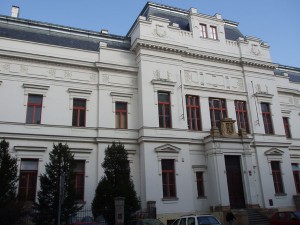 Academy of Fine Arts in Prague is the first art school, founded on the territory of contemporary Czech lands.The school was founded on the initiative of the so-called Society of Patriotic Friends of the Arts. On the ground of the Emperor’s decree it was opened on the 10th of October in 1800. Its first director was Jozef Begler. During 200 years of the existence of the Academy the main focus was made on landscape, romantic and historic painting. In 1896 the Academy became state owned which led to the opening of sculpture, architecture and graphic departments. In 1926 the school was first school to get „higher school of art“ status. In 1947 Bohuslav Slansky created in the Academy a restoration school of European level.
Academy of Fine Arts in Prague is the first art school, founded on the territory of contemporary Czech lands.The school was founded on the initiative of the so-called Society of Patriotic Friends of the Arts. On the ground of the Emperor’s decree it was opened on the 10th of October in 1800. Its first director was Jozef Begler. During 200 years of the existence of the Academy the main focus was made on landscape, romantic and historic painting. In 1896 the Academy became state owned which led to the opening of sculpture, architecture and graphic departments. In 1926 the school was first school to get „higher school of art“ status. In 1947 Bohuslav Slansky created in the Academy a restoration school of European level.Webpage: http://www.avu.cz/


